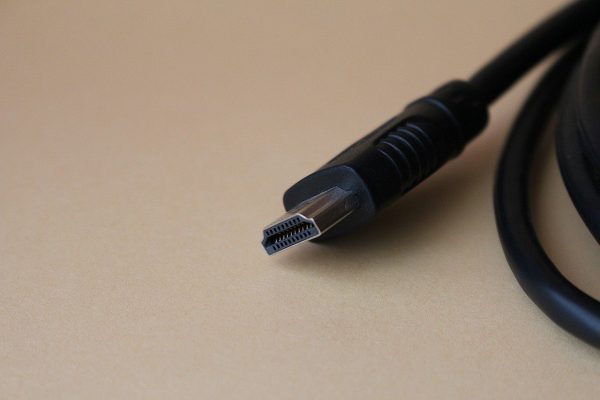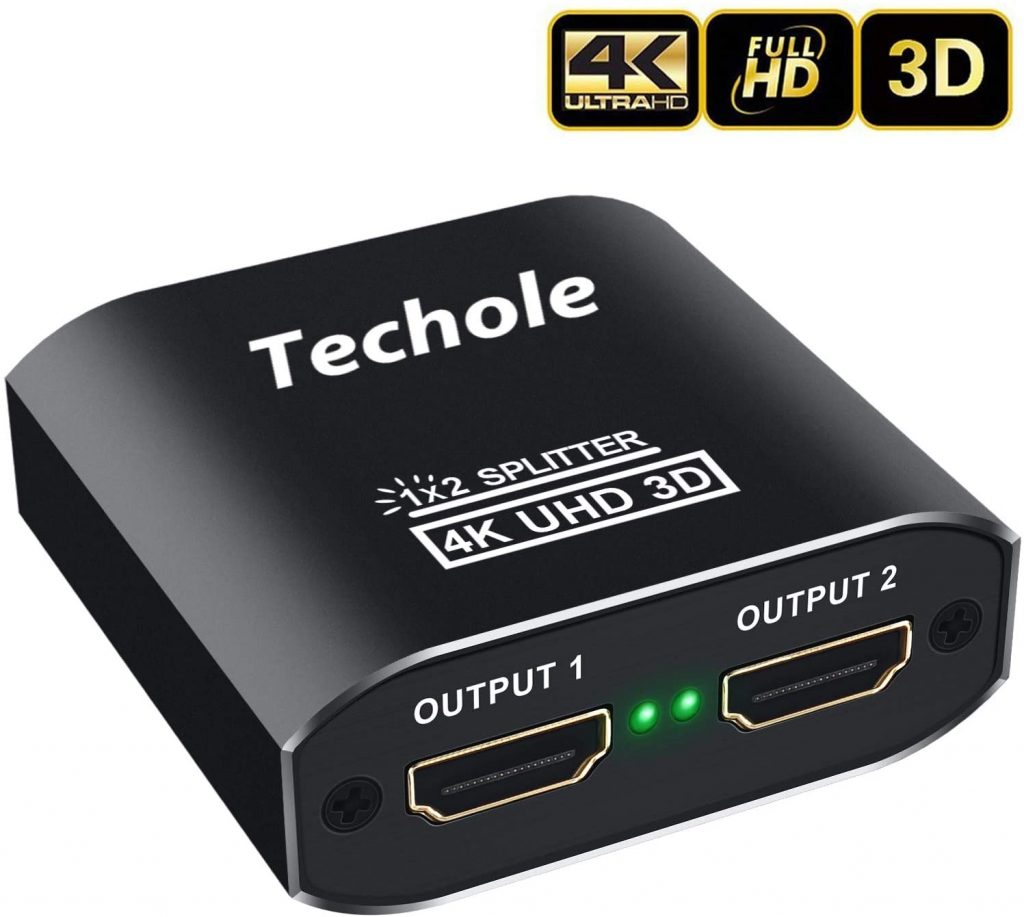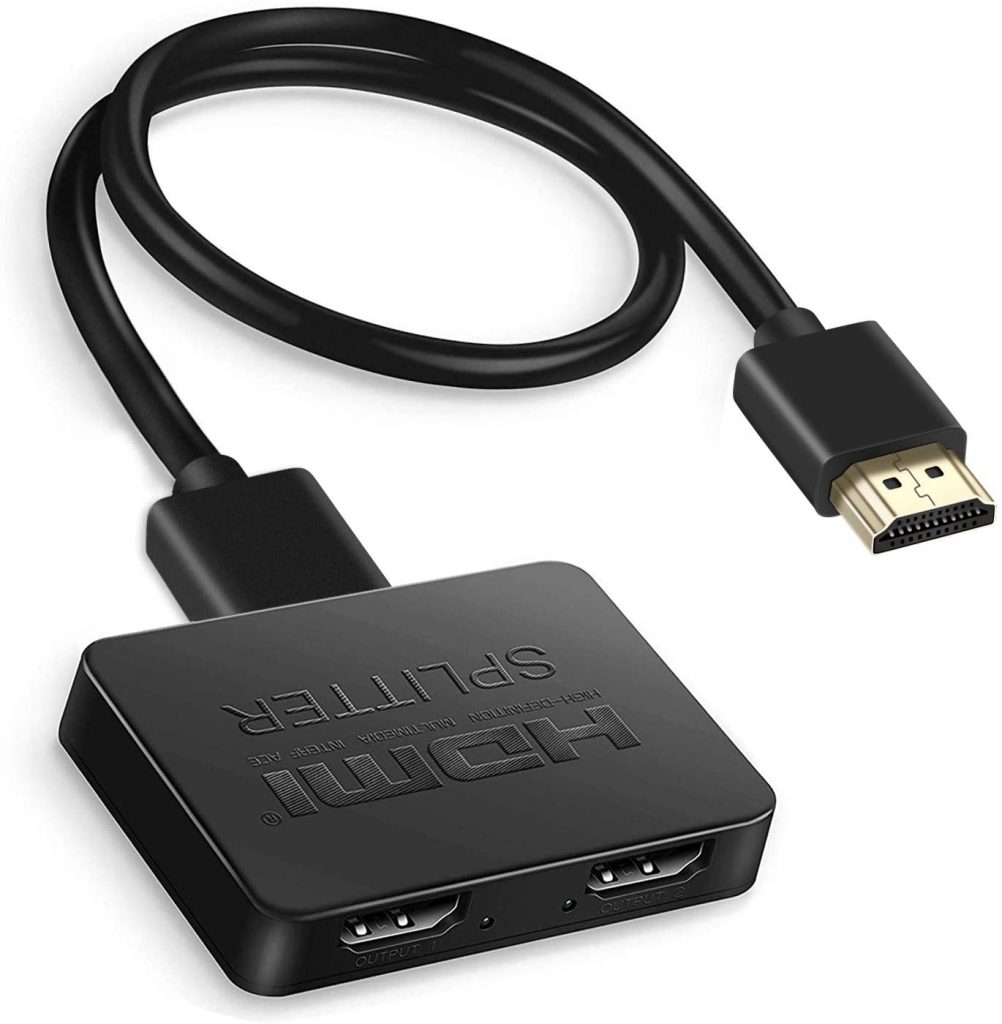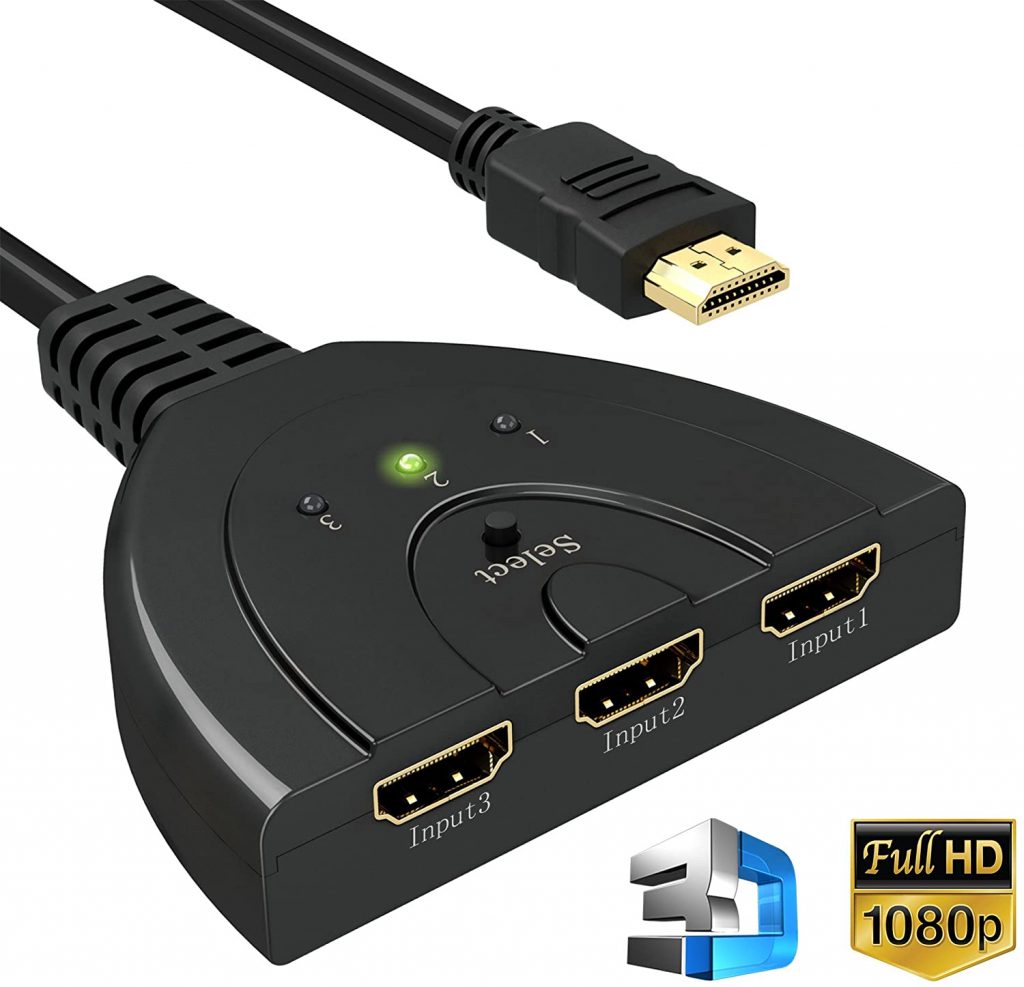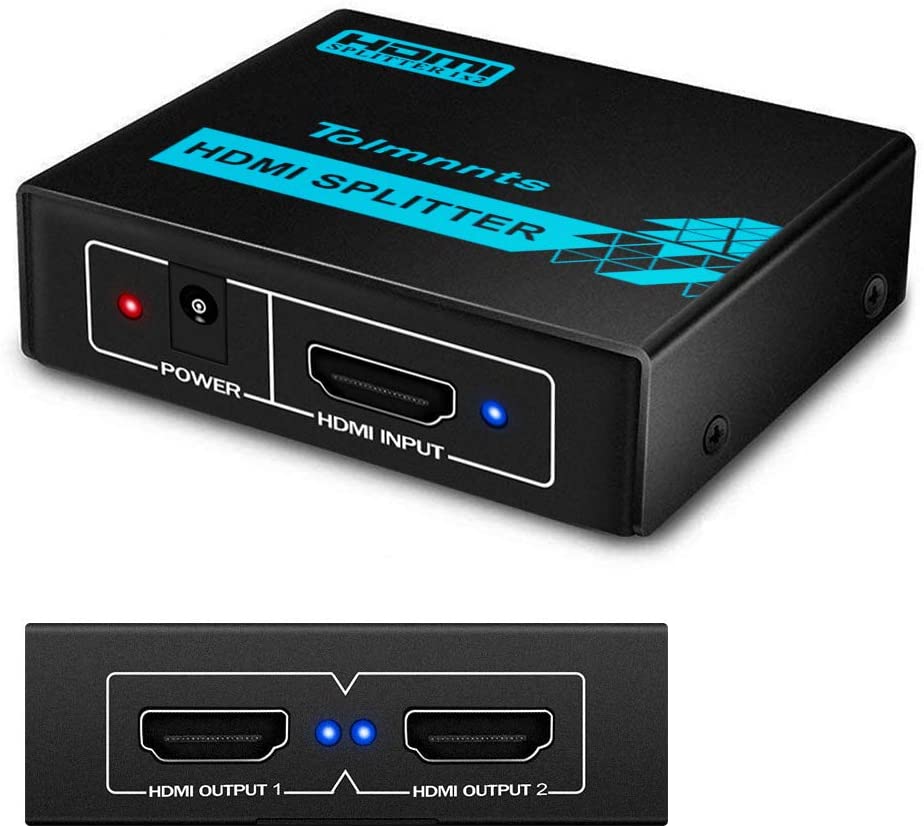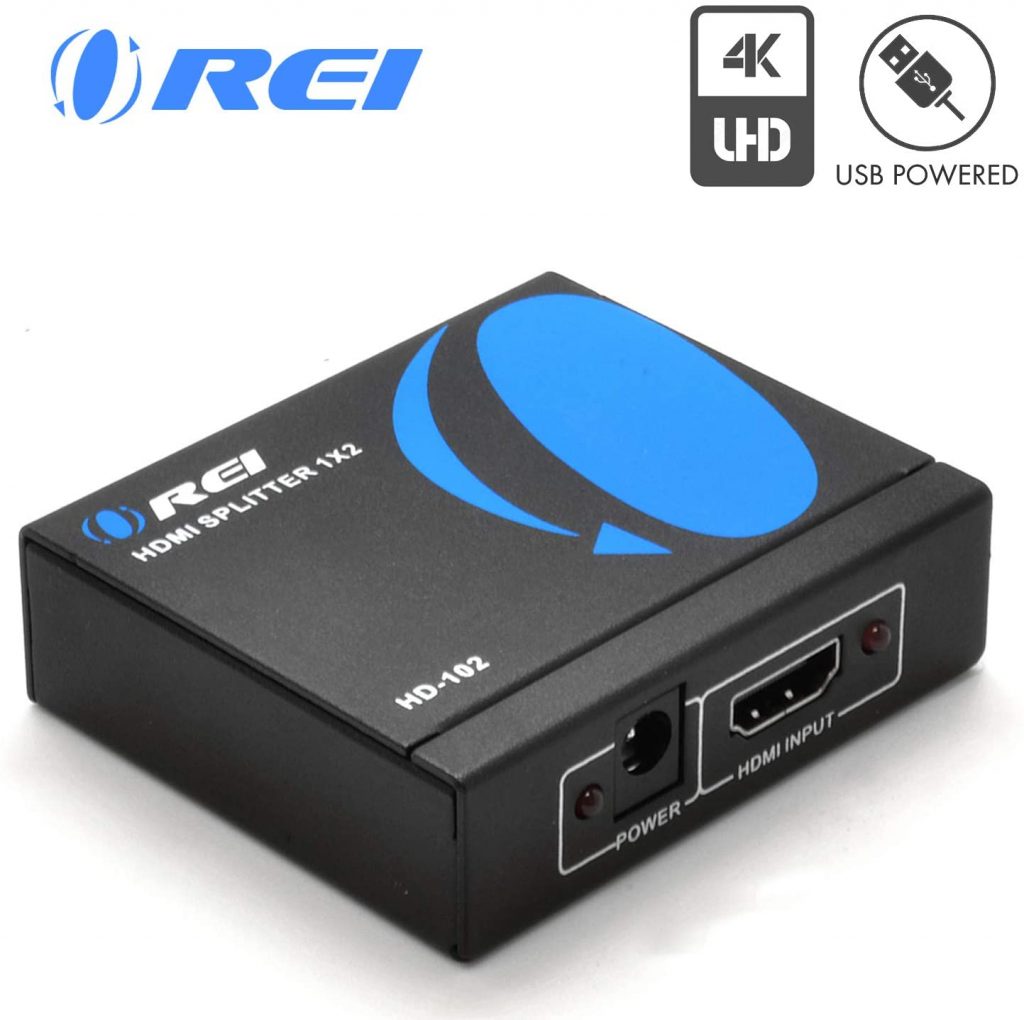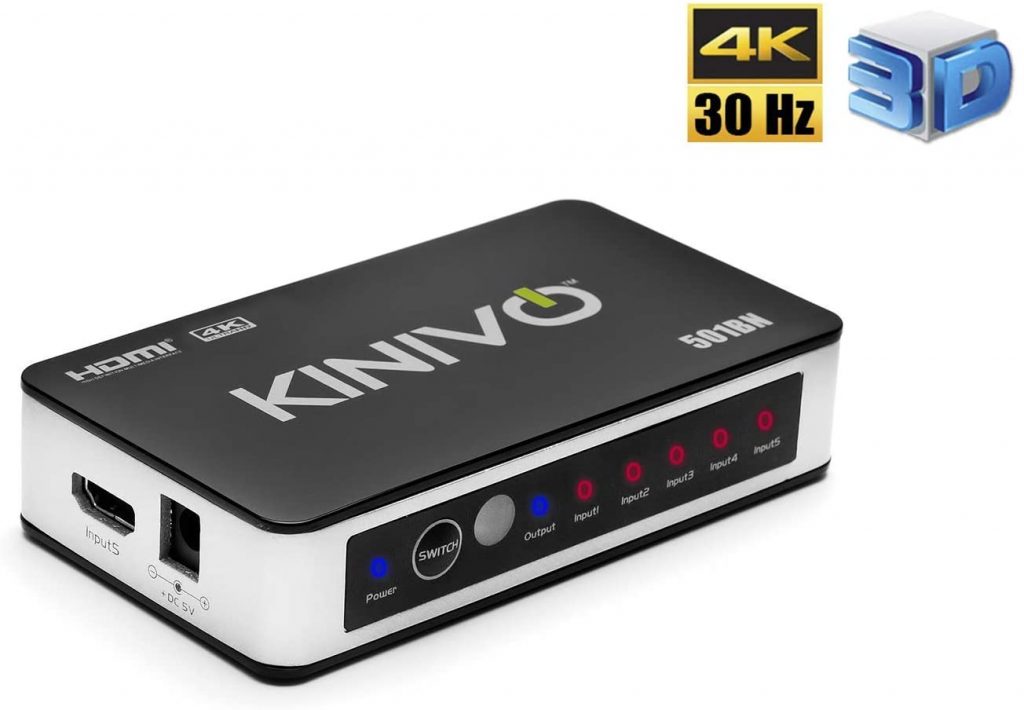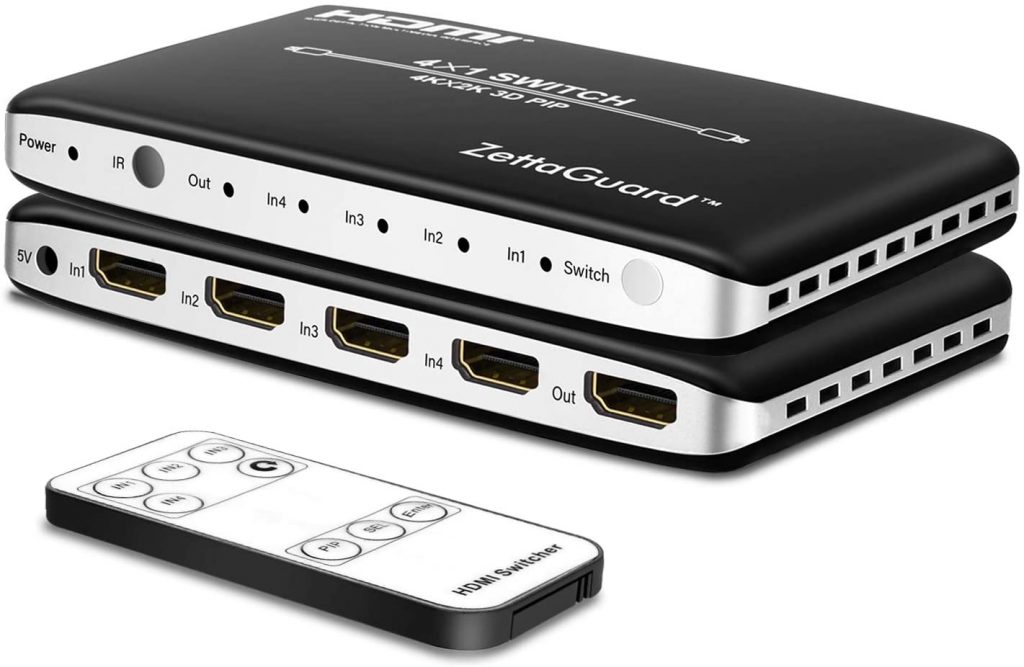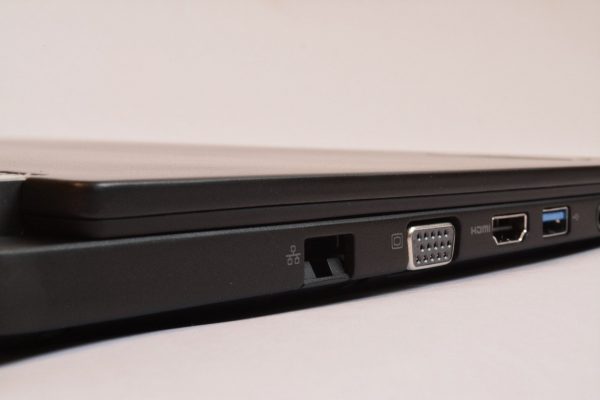Find out how HDMI splitters work and see the best ones available today.
Introduction to HDMI Splitters
An HDMI splitter is a simple piece of tech that allows its user to broadcast audio-visual data from any HDMI source to another HDMI receiver either just one or more. This is great in circumstances where you have any kind of TV plus a sound system that you wish to feed an external origin to, but the devices that you have don’t contain either an HDMI ARC or eARC. HDMI splitters also let you show the content from one device origin to multiple monitors. However, people are still confused about what an HDMI splitter is. Especially since there is a similar device called an HDMI switch. This device is often mistakenly thought to be an HDMI splitter. The main difference here is that an HDMI splitter takes any channel that comes from a source and splits it to multiple outputs. Meanwhile, an HDMI switch runs numerous source inputs and then transmit them to a just one output. In short, HDMI splitters transmit images to multiple devices at once while the HDMI switch is only capable of transmitting to one.
The Best HDMI Splitters Available Today
Alternative to HDMI Splitters: HDMI Switches
How Does an HDMI Splitter Work?
Another feature is that this splitter allows for a pretty good amount of audio options. It supports nearly all audio options available. You won’t need to fret about getting sound lags or drops while using it. Also, the Orei 4K 1×8 HDMI Splitter provides its users with high-resolution images, which include both Ultra HD and 3D deep color. Also, this HDMI splitter is very friendly to its users. All you have to do is to connect it to the adaptor. Next, you will need to attach the input source to the output source. This does not require any software installation. Even if this HDMI splitter can project image signals to eight different outputs, it has its limitations. First, it won’t work if the HDMI cable in use exceeds 30 feet in length. Second, the splitter unfortunately doesn’t extend monitor screens. Instead, it makes sure that it delivers what’s being displayed on the input source as exactly as possible and in the greatest quality possible on all output sources attached to it. This affordable HDMI Splitter boasts a 10.2-gigabit bandwidth. This device also features HDMI 1.4, 1.3, and 1.2 compatibilities. Compatible devices include desktop computers, Xbox One, projectors, Chromecasts, as well as Apple and Samsung TV. This HDMI splitter also offers users up to 1080p and 4K resolution for all the input and output devices that you have. This leaves without having to fear a drop of resolution when splitting outputs. Although this HDMI splitter can’t display one input source to two screens simultaneously, it does allow users to swap between the two displays connected to the one source display. The Techole Aluminum Bi-Directional HDMI Splitter has a bandwidth of 10.2 gigabits. This allows the picture or video quality to be consistent across all output devices. This product supports 1080p and 4K resolutions. It is also compatible with a multitude of devices such as gaming consoles, Chromecast, and PC among others. This splitter supports 4K, 3D, 3480x2160p, 1080p, and a lot more. If you’re working on 50-60 Hz usually, you’ll still obtain a clear quality image and sound for your transmissions. If you want 4K though, you need to have 30 Hz. Also, this splitter has 30 to 36-bit color depth and is HDMI 1.3 & 1.4, and HDCP compliant. It works with some Dolby systems as well, so you can obtain the best sound possible. The gold plating also fights corrosion and ensures that the connection stays clear. This allows different audio formats such as DTS7.1, Dolby TrueHD AC3, and others to remain clear. While this HDMI splitter allows you to connect to three devices, you can only have one HDMI output port. You’ll have to swap between sources to see all the data. This product’s list of compatible devices is excellent as well. This HDMI Splitter works with 4K HDTV, HDMI cable boxes, PCs, and more. And there’s also nearly no signal loss or any big delay. Its compatibility for 4K Resolution is also pretty neat. It can handle from 480p to 1080p quality without any issues, as well as the audio and video feed that includes ARC and Dolby TrueHD sound. Lastly, this HDMI splitter is compatible with both 3D and ethernet connections. What’s great about this product is it supports the lowest resolution of images and videos as well as 4K. It also supports several kinds of devices such as game consoles, computers, and Apple TV to name a few. This offering from CERRXIAN also lets you connect cables for up to 32 ft. with no video lag. Check out this CERRXIAN product today to enjoy all of its features. Also, you can get more than one display working when you use this splitter, as well as LED indicator lights to let you know what HDMI inputs are on. Combine that with up to 1080p resolution, and 3D/4k compatibility, the device’s plug and play unit is easy to set up and start. Lastly, you shouldn’t get any substantial signal loss/delay if you lengthen the transmission distance or add more displays to the system. The device’s picture quality can accommodate images with 480p to 1080p resolution easily. It also has a 5-volt AC power adapter included when you purchase. Overheating isn’t an issue thanks to its design and metal case, and it can support all audio tech currently available. For the best 4k results, you do have to be at 30 Hz, or if you’re not picky, you can go to 50 to 60 Hz for something less than 4K resolution. However, this product works best with 3D and 1080p resolutions. To help ease the process, the Kinivo HDMI switch comes with an auto and manual switch options, which the user can control through the included IR remote. You also don’t have to fear about overheating as its aluminum body allows heat to dissipate. The HDMI switch can support 3D, 1080P, and 4K resolutions as well, which is great. Using the Zettaguard HDMI Switch, you can display images within another image. This allows you to switch from one device to another as you can now see all screens. This is perfect for computers, gaming consoles, and home entertainment systems. This allows you to watch sports games and play video games at the same time, so you can go from cheering for your team to laying with friends. This Zettaguard product supports up to 4K resolution video and standard audio options. HDMI splitters are intuitive in terms of its design. This device will take a single HDMI signal and project it to multiple connected outputs such as 4K monitors, 4K TVs and OLED TVs. Of course, this means that the user needs to obtain additional cables for every device that they wish to output the source device to. Even with the differences in passive and active HDMI splitters that work in different ways, their principle of projecting a single signal to different outputs stay the same. A normal HDMI cable has around 19 wire pairs that connect to the same amount of corresponding pins on the jack. All of these wires transmit different kinds of information electronically through the use of digital signals. These signals include audio and visual data as well as data for specific devices. Lastly, they also include signals for remote control commands. Because of this, an HDMI splitter’s job is to duplicate, or split, each one of the wire pairs we’ve discussed. As a result of this, you can make use of two or more sets of 19-wire-pairs that you can then feed into as many HDMI jacks as you wish. That’s the long and short of it when it comes to passive HDMI splitters. For the active ones? Not really. There’s another step that you have to do.
Disadvantages of Branching Out Signals
One of the disadvantages of branching out an HDMI signal is that you are technically cutting the amount of power that each output signal has. Due to this, you’ll rarely see a passive HDMI splitter that has more than two outputs. However, in the case of active HDMI splitters, they have a way to compensate for the power loss. This is done by providing additional power to the HDMI signal. This is usually done through the use of an external power source. The first signal proceeds through a component inside the HDMI splitters that’s called a transistor. This signal will then act as a gate, ensuring that it allows and restricts the electricity coming from the wall power source as the signal goes through it.
Different Types of HDMI Splitters
Passive HDMI Splitters
If you require a basic or minimal connection, Passive HDMI splitters are for you. So long as the signal being transmitted hasn’t been tampered by any kind of interference, it would be able to go through and connect with no difference that can be noticed. However, if you’re transmitting from a single source that’s outputting to both an audio and visual output, an HDMI splitter should be the last option. A far more preferred way for most people to connect devices is to make use of either HDMI ARC or eARC. This kind of setup on your display and audio device needs to have either an HDMI ARC or eARC port. Though if you’re worried about knowing which is which, don’t worry, these ports are usually labeled as such beside the port itself.
Active HDMI Splitters
If you are showing the view of one device to two or more destinations or if you need to use long cable runs, then you’ll need to get an active HDMI splitter As mentioned before, when you divide any kind of electronic signal, the results of doing so will be weaker than the original signal. Also, splitting it more than two times will weaken the signal even more. Lastly, weakened electronic signals, even those that are good for short lengths of cable, can be susceptible to interference on longer cables. An active HDMI splitter allows the user to project the signal into multiple connected outputs. This is all possible without any huge loss in signal integrity. This feature allows a single HDMI signal to be split many times without a loss in quality. This also means that the signal is less likely to get radio frequency interference.
Setting Up an HDMI Splitter
A lot of cheap, high-definition TV’s only have a single HDMI input. But an HDMI splitter allows users to attach two devices into the one HDMI input and then switch between the two of them without any kind of hassle. You can also make use of an HDMI splitter to show what is playing on one source, such as a Blu-ray player, on multiple televisions.
Split Connections Into TV
Step 1
Switch off the TV and any kind of HDMI device that you’re planning to connect to your HDMI splitter.
Step 2
Attach the HDMI splitter into an accessible HDMI port that’s either behind or on the side of your TV. This makes the TV to be the destination device.
Step 3
Attach any HDMI device that you wish to use into the available ports that are on the splitter. These will be your signal sources moving forward. On some HDMI splitters, you can only plug two sources, though there are others where you can plug in more.
Step 4
Switch on your TV and any sources that you have connected to the HDMI splitter. Go through the inputs on your TV until you see the HDMI input that goes with where you attached the HDMI splitter.
Step 5
Press the corresponding switch on the HDMI splitter box or on the remote control that comes with the HDMI splitter (if there is one) that changes between the sources that are connected to the HDMI splitter.
Split Device Feed
Step 1
Switch off the device you’re attaching the HDMI splitter to. Moving forward, this device will now be the source.
Step 2
Attach the HDMI splitter into an accessible HDMI input on the device that you wish to use as the source device.
Step 3
Attach one HDMI cable into an available input on the HDMI splitter for all the destination devices. Attach the HDMI cables there into any available HDMI input on the devices that you’d like to display either the audio and video feed from the source.
Step 4
Turn on both the source and all of the destination devices.
Step 5
Search through the inputs on the destination devices till you see the HDMI input that represents where you attached the HDMI cable into the destination devices.
